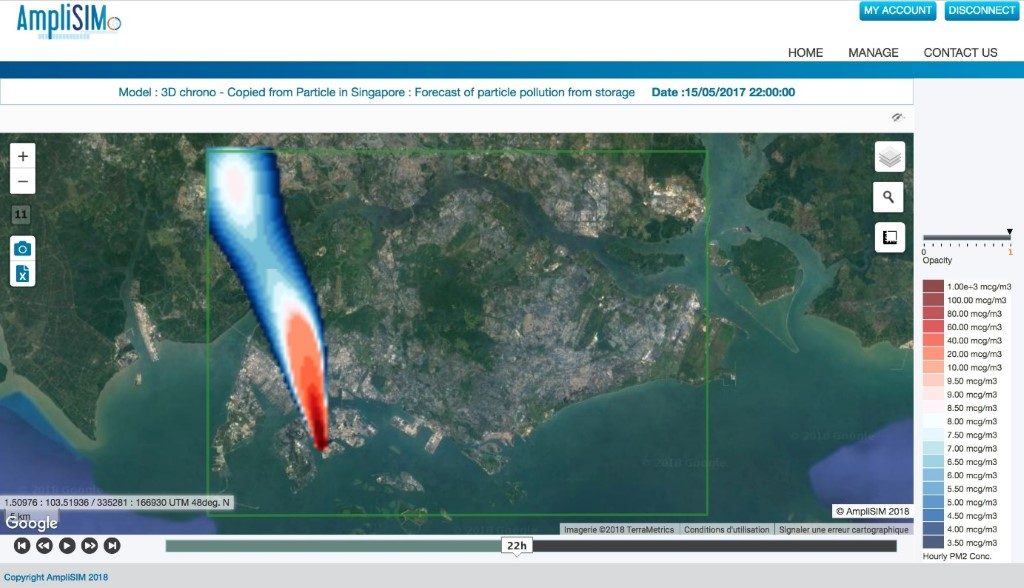SUPERCOMPUTERS

Supercomputers, as their name explains, are what technology is capable of producing more powerful as computers.
For over 50 years, their extreme capabilities, multiplied by almost a factor a thousand every ten years, have led to considerable progress in research and industry thanks to digital simulation, which, by modelling physical phenomena of all kinds and at any scale, makes it possible to understand their behaviour and predict their evolution.
Digital simulation, now allied to the new paradigms of artificial intelligence, is going to be more and more at the origin of technological upheavals but also of societal evolutions touching as crucial fields as health, energy transition and, unavoidably, monitoring of climate evolutions.
These “Formula 1” supercomputers allow experts trained to use their exceptional capabilities to achieve otherwise unachievable results. The new supercomputer that IDRIS, national computing centre of CNRS, will operate this year on behalf of CNRS and GENCI, will simultaneously allow the use of a combined capacity equivalent to that of several tens of thousands of individual computers. With his prodigious capabilities, it will make possible to carry out high-resolution simulations planned during the AQMO project, using both its considerable computing power (potentially 14 million billion operations per second!) and its data processing capacities, also equivalent to tens of thousands of individual computer hard drives …
What does a supercomputer look like?
Physically, supercomputers are in the form of bayed enclosures. As they consume large amounts of energy (as much as a small village!), they need to be cooled, and because of this they are deployed in specially designed rooms and are usually housed in centres called “Computing Centre”.
In what areas are the supercomputers used?
In all tasks that require a very high computing power, such as weather forecasts, climate studies, chemistry (calculation of structures and properties, molecular modelling, etc.), physical simulations (aerodynamic simulations, calculations of material resistance, nuclear weapon explosion simulation, nuclear fusion study, etc.), cryptanalysis, simulations in finance and insurance, and artificial intelligence.
DIGITAL SIMULATION
What is digital simulation?
The numerical simulation of air quality is to reproduce on a computer how the various pollutants (particles, gases, etc.) are dispersed in the atmosphere.
Numerical simulation is based on physical equations (mass conservation, transport of pollutants, etc.). These evolution equations are computed by computer programs through sequences of mathematical operations called algorithms.
Simulation of the dispersion of particulate matter
How to determine the quality of the air?
The concentration of different pollutants can be measured by sensors. But it is difficult, if not impossible, to measure the concentration of situations that do not exist:
- How to measure the impact of a “What if” scenario, i.e. what if all vehicles were running on gasoline instead of a gasoline-diesel mix?
- How to measure the air quality tomorrow?
Digital simulation can provide answers to these questions, for example by relying on weather forecasts – which are also obtained by digital simulation.

Digital simulation VS data
Performing numerical simulations requires a lot of data. Wind flow at street level depends on many factors, including:
- Wind at altitude, strongly influenced by general circulation,
- Buildings that are more or less screen to the wind,
- Relief, which leads the wind to accelerate, as in a pass, or slow down by obstacle effect,
- The nature of the soils and their ability to trap heat and water, as paragliding pilots know, etc.
The dispersion of pollutants in the streets depends on the wind, but also for example sources of emissions: for emissions related to motor traffic, this concerns in particular the position of the streets, the number and type of vehicles traveling on the streets. It is also necessary to consider other sources of pollution, such as fireplaces of individuals in winter or industrials.
These data must be collected, processed and supplemented to allow a realistic simulation of the dispersion of pollutants.


